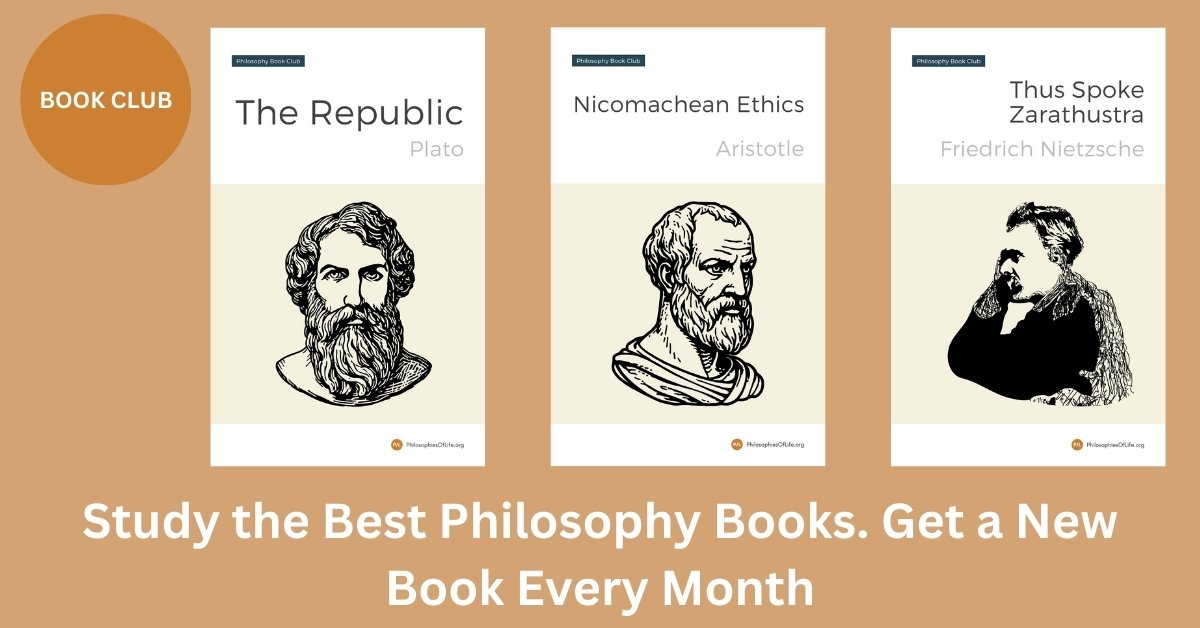Understanding the role of aesthetics in David Hume’s philosophy is essential for anyone seeking to deepen their personal philosophy of life. While many are aware of its significance, the concept is often misunderstood or overlooked. A clearer grasp of this idea can greatly influence how we shape and refine our own philosophical outlook. This article examines David Hume’s philosophy, his concept of aesthetics, and their importance in developing a meaningful approach to life.
Key features of David Hume’s philosophy
David Hume was a Scottish philosopher known for his influential ideas about human nature, knowledge, and morality. One of his key contributions was his emphasis on empiricism, the belief that all knowledge comes from sensory experience. Hume argued that we learn about the world through observation and experience, rather than relying on innate ideas or pure reason. He was also skeptical of concepts like cause and effect, suggesting that our belief in causation is based on habit or custom, not any logical proof.
Hume’s philosophy also focused on human emotions and their role in decision-making. He believed that reason alone cannot drive action; instead, emotions or “passions” are what truly motivate people. This idea challenged the traditional view that reason should always govern behavior. Additionally, Hume explored morality, arguing that it is grounded in human feelings rather than objective truths. For him, moral judgments stem from empathy and the shared feelings that connect us as social beings.
Finally, Hume was critical of religious beliefs that lacked empirical evidence. He questioned miracles and the existence of God, encouraging people to rely on evidence and reason. Overall, David Hume’s accessible and innovative thinking made a lasting impact on philosophy, shaping ideas about knowledge, ethics, and the nature of belief.
What is aesthetics?
David Hume believed that aesthetics, or the philosophy of beauty and art, was deeply connected to human emotions and subjective experiences. According to Hume, beauty does not exist as an objective property in things themselves but instead arises from the feelings they evoke in individuals. He argued that our sense of beauty depends on our ability to respond emotionally to art, nature, or other experiences.
Hume emphasized the role of taste, which he described as the ability to appreciate beauty through an informed and refined mind. However, he acknowledged that taste could vary between individuals, as personal experiences, education, and cultural background all influence how one perceives beauty. Despite this variation, Hume believed that there were certain principles of taste that could provide a standard of judgment, allowing people to identify works of superior quality.
He also discussed the importance of consensus among “true critics”—those with experience and sensitivity to the nuances of beauty. These individuals, according to Hume, are better equipped to judge artistic value because they have developed their taste to a higher level. Ultimately, he viewed aesthetics as a balance between subjective feelings and objective qualities, mediated by a developed sensitivity to art and beauty.
This example helps to demonstrate this philosophical perspective. One instance that reflects David Hume’s view about aesthetics is his discussion of taste and beauty in art. Imagine two individuals observing a painting in an art gallery. One person is deeply moved by the harmonious interplay of colours and the intricate details of the scene, while the other person feels indifferent, seeing nothing special in the composition. Hume notes that judgments of beauty often vary based on personal experiences, cultural upbringing, and education. For instance, someone who has studied art history may appreciate subtle elements in a piece that an untrained eye might overlook. Similarly, differing tastes in music or literature can provoke passionate debates over what is considered beautiful or meaningful. This divergence, according to Hume, highlights how subjective experiences play a role in shaping individual preferences while opening the door to understanding diverse perspectives on art and beauty.
Challenges to David Hume’s view about aesthetics
Philosophers have raised objections to or rejected David Hume’s ideas about aesthetics for a variety of reasons, often focusing on issues of subjectivity, cultural bias, and the complexities of taste. A common critique is that aesthetic judgment cannot be entirely objective, as people have vastly different tastes shaped by their unique experiences and cultural contexts. Critics argue that what one person finds beautiful or moving may not resonate with another, and this diversity of perception is difficult to reconcile with the idea of universal principles in aesthetics.
Another objection stems from the concern about cultural and historical bias. Some philosophers contend that aesthetic judgments, whether about art, music, or literature, are heavily influenced by the time and place in which they are made. Critics suggest that Hume’s ideas, and the aesthetics he might have valued, likely reflect a Western, Eurocentric perspective that does not account for the immense variety of aesthetic traditions and values from other cultures around the world. This raises the question of whether it is fair or meaningful to propose standards that claim to judge aesthetic value across all contexts.
Furthermore, philosophers who reject Hume’s view may also point to the subjective emotional responses that art and beauty provoke. Critics highlight that these responses are deeply personal and tied to individual psychology, making it unreasonable to expect broad agreement about what constitutes something as aesthetically valuable. For instance, two individuals can experience entirely different emotional reactions to the same work of art, and this subjectivity undermines the pursuit of universal aesthetic criteria.
Finally, the evolving nature of art and cultural appreciation is another reason some object to Hume’s stance. Over time, tastes and opinions about what is considered beautiful, compelling, or valuable often change. Philosophers question whether any theory of aesthetics can be timeless when aesthetic preferences are continuously shaped by changing social norms, technological advancements, and new artistic movements. This adaptability makes it challenging to pin down definitive aesthetic principles that would apply across eras.
These critiques suggest that aesthetics are complex and multifaceted, resisting the idea of simple or universal guidelines. Philosophical debates in this area continue, highlighting the richness and diversity of human experiences of art and beauty.
Why aesthetics is important to David Hume’s philosophy
These are some of the main reasons why grasping the concept of aesthetics is crucial to comprehending David Hume’s philosophy.
- Connection Between Emotion and Perception
Aesthetics plays a key role in understanding the connection between emotion and perception in philosophy. This is important because it shows how people experience beauty and art emotionally, not just rationally. The feelings we get when we see a beautiful sunset, listen to moving music, or admire a piece of artwork are deeply tied to how we view the world around us. Instead of focusing only on reason, aesthetics allows for an exploration of how our senses and emotions help shape human experiences. By exploring these ideas, it becomes clear that human perception is not purely logical but also influenced by emotions and subjective judgments. This connection offers insight into how individuals interact with and assign value to the world around them.
- The Role of Taste in Judgment
Aesthetics introduces the concept of taste, which is essential for understanding how people make judgments about beauty, art, and quality. Taste involves personal preferences and cultural influences, which differ from one person to another. By examining the role of taste, philosophy can explore how individuals determine what they find pleasing or valuable in art and nature. This is important to understanding philosophy because it highlights the subjective and universal elements in human responses to beauty. Taste may seem individual, but it also includes shared standards that help people appreciate and evaluate art or experiences together. Exploring this tension between subjectivity and shared norms creates a deeper understanding of how humans perceive beauty and form judgments.
Contrasting David Hume’s philosophy with Kant’s philosophy
David Hume and Immanuel Kant both had profound insights into aesthetics, but their approaches reflect distinct philosophical traditions. Hume’s view on aesthetics emphasized subjective experience and personal taste. According to Hume, beauty is not an inherent quality of an object but depends on the sentiment and perception of the observer. This means aesthetic judgments are closely tied to individual feelings, although Hume acknowledged that shared human experiences and cultural exposure create patterns of commonly accepted standards of taste.
Kant, on the other hand, sought to bridge the subjective and the objective in aesthetics. While he agreed that aesthetic experience is subjective, he believed it also possessed a universal dimension. Kant argued that when we judge something as beautiful, we do so with the expectation that others will agree, because the judgment arises from a disinterested pleasure—unconnected to personal desire or utility. This universality is a key differentiation from Hume’s approach, which rests firmly on individual sentiment without expecting universal agreement.
Thus, the primary difference lies in the universality of aesthetic judgments. Hume highlights subjectivity and variability, while Kant introduces a more structured framework, asserting that aesthetic judgments, though personal, carry a shared logic that others can recognize. This distinction showcases their differing philosophical foundations—Hume’s focus on empirical experience and human nature versus Kant’s transcendental idealism, which seeks universal principles beyond individual perception.
Aesthetics, David Hume’s philosophy and the philosophy of life
Reflecting on David Hume’s views about aesthetics, whether you agree with them or not, can be incredibly valuable as you develop your own philosophy of life. Aesthetics, at its core, involves the study of beauty and taste, and engaging with these ideas can help deepen your appreciation for the world around you. Life is full of moments where beauty, both natural and human-created, can evoke powerful emotions and influence your perspective. Contemplating what you find beautiful and why can lead to a better understanding of your values and priorities, which are essential components of any personal philosophy.
Hume’s emphasis on reflection and judgment calls attention to the importance of thinking critically about our experiences. While his conclusions may or may not align with your beliefs, considering why people differ in their aesthetic preferences encourages empathy and intellectual growth. This practice of stepping into other perspectives can be applied not only to art or beauty but also to broader aspects of life. It reminds us that our judgments are shaped by personal experiences, cultural backgrounds, and emotional states—all of which shape how we interpret the world.
Furthermore, exploring ideas like Hume’s pushes you to think more deeply about how emotions play a role in decision-making and what brings meaning to your life. Beauty is often intertwined with what we consider meaningful—whether it’s found in personal relationships, nature, or creative pursuits. Your own philosophy of life will benefit from this inquiry into what you value, as it prompts you to live more intentionally.
On a practical level, reflecting on aesthetics in the context of Hume’s ideas can also help cultivate mindfulness. By paying attention to beauty in everyday life, you might discover new sources of joy and fulfillment. Ultimately, whether you agree with his perspective or not, the act of engaging with Hume’s philosophy encourages the kind of introspection that is vital for personal growth and for crafting a thoughtful and meaningful philosophy of life.
Further reading
Beardsley, M. C. (1958). Aesthetics from classical Greece to the present. Macmillan.
Cooper, D. E. (1994). A companion to aesthetics. Blackwell.
Hume, D. (1757). Of the standard of taste. London.
Kivy, P. (1991). Philosophies of arts: An essay in differences. Cambridge University Press.
Townsend, D. (2001). Hume’s aesthetic theory. Routledge.


